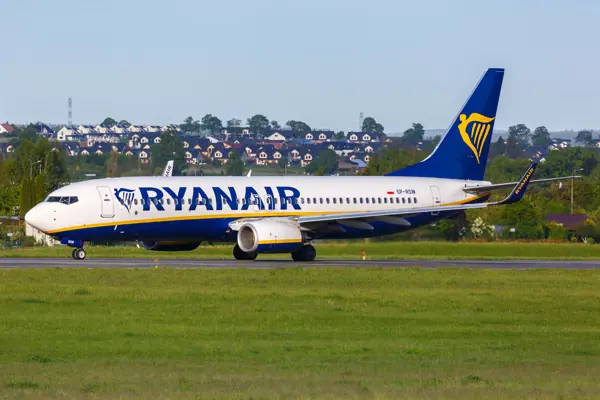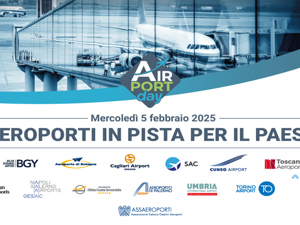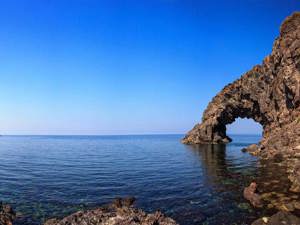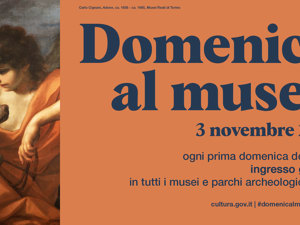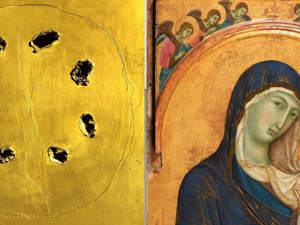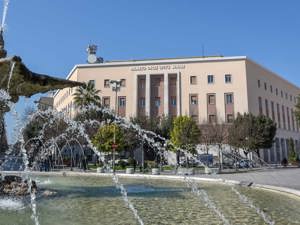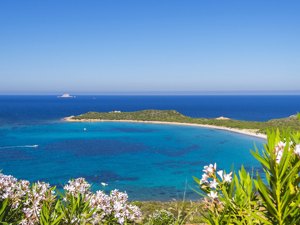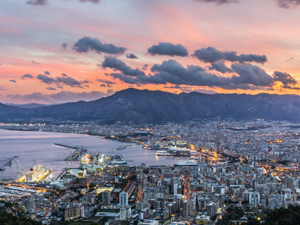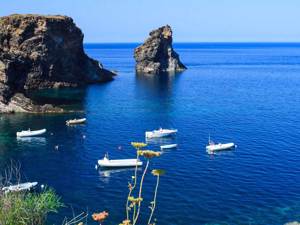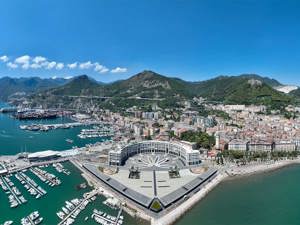A corollary of history, monuments and culture, blended with the grandiosity of Etruscan and Roman remains
Is known as the “città augusta” (imposing city). One thousand years ago it was divided into rioni or borghi (districts), which were named after their medieval gates, which correspond to the original gates of the Etruscan-Roman era: Porta Sole, Porta Sant’Angelo, Porta Santa Susanna, Porta Eburnea and Porta San Pietro.

Perugia. Photo Sisterscom.com, Shutterstock
The five itineraries that today cross the city correspond to traditional routes. They follow historic, artistic and architectural criteria and are marked out by 128 brass plaques. Walking through the small alleyways and squares is a privileged way to visit Perugia, a city of art and the capital of chocolate. All five itineraries begin at the acropolis, where the most important monuments can be found, and go in discovery of the true, hidden identity of the city, giving visitors a taste of the history, culture and old craft and trading activities that make up its urban identity.
The Arch of Augustus, which faces north and has some impressive towers, is the monumental entrance in the Etruscan walls, which are best seen in Via Battisti. Porta Trasimena is one of the four lesser gates that still exist within the walls. Porta Marzia, instead, is the gate that faces south, towards Rome. Only the upper, considerably elegant and symbolic part is still intact. The climb up the steps of the Canapina is also very striking, as is the steep section of Via della Pazienza.
The city of Perugia is filled with fountains and luxuriant gardens. The Fontana Maggiore (great fountain), a masterpiece of Italian medieval sculpture dating back to 1280, dominates the centre of Piazza IV Novembre. The Fonte del Piscinello is even older.

Great Fountain of Perugia. Photo Sisterscom.com, Shutterstock
There are numerous panoramic viewing points, beginning with Belvedere Carducci, which offers romantic and spectacular views over the Perugian urban landscape towards the Umbrian valleys and the hills beyond. From the benches in Via delle Prome, near Porta Sole, a spectacular view can be enjoyed of one of the beautiful landscapes in Umbria.
The beautiful, medieval Via dell’Acquedotto is a narrow and fascinating pedestrian walkway. Another beautiful place to sit is on the seat in front of the fountain with moss-covered bronze statue of a bather in the centre of the nineteenth-century atmosphere of Piazza Italia. The green space of San Francesco al Prato and the garden of the small Temple of Sant’Angelo, in the north of the old town, are ideal places for sunbathing. Finally, the terrazza del Mercato Coperto (terrace of the covered market) offers a view over the city, and in summer is transformed into an open-air café.
Among the many walks through the web of small streets in the old town, there is one that takes you into the heart of medieval Perugia and, in quarter of an hour on foot, touches the most important places in the district of Sant’Angelo, beginning in Piazza Morlacchi, near the very centrally located Corso Vannucci, and ending at the top of Corso Garibaldi at the imposing Cassero of Porta Sant’Angelo. This building’s tower is the highest point in Perugia and offers a breath-taking view.

Chocolate of Perugia. Photo Sisterscom.com, Shutterstock
Chocolate Tour in Perugia
A visit to Perugia would not be complete without going on the chocolate tour.
The traditional craft of making the “dolce degli dei” (sweet of the gods) began in Corso Vanucci 110, the historical headquarters of the Perugina shop. Inside there is a chocolate museum which is free to the public. Along the same road is the famous Pasticceria Sandri, the oldest patisserie in Umbria, which opened in 1860. A favourite with locals, the Antica Latteria Perugia, in Via Baglioni 5, is a small bar decorated with majolica tiles.
The traditional craft of making the “dolce degli dei” (sweet of the gods) began in Corso Vanucci 110, the historical headquarters of the Perugina shop. Inside there is a chocolate museum which is free to the public. Along the same road is the famous Pasticceria Sandri, the oldest patisserie in Umbria, which opened in 1860. A favourite with locals, the Antica Latteria Perugia, in Via Baglioni 5, is a small bar decorated with majolica tiles.
Text by Luca Lembi
Updated by Alisè Vitri
Avion Tourism Magazine
Photos: Copyright © Sisterscom.com, Shutterstock
All rights reserved Copyright © Sisterscom.com
Photos: Copyright © Sisterscom.com, Shutterstock
All rights reserved Copyright © Sisterscom.com
Video: www.umbriatourism.it
Tourism Board
www.umbriatourism.it
Partnership with Booking.com
Where to sleep in Perugia

Perugia. Photo Sisterscom.com, Shutterstock
Perugia is a welcoming city and offers different possibilities for accommodation.
To find the ideal hotel and the best offers you can do a search for the stars but also for districts or landmarks.
DISTRICTS
Hotels in the districts
LANDMARKS
Hotels in tourist areas
WHERE TO GO in perugia
Monuments in Perugia

Photo Sisterscom.com, Shutterstock
FONTANA MAGGIORE IN PERUGIA
A masterpiece of Italian medieval sculpture, this fountain was built between 1278 and 1280 by Nicola and Giovanni Pisano, according to the design of Friar Bevignate. It dominates the centre of Piazza IV Novembre, which was formerly Piazza Grande. It consists of two concentric polygonal basins, one of which depicts the twelve months and relative zodiac signs, the other is decorated with twenty-four small figures of symbols, saints and characters from history.

Photo Sisterscom.com, Shutterstock
PALAZZO DEI PRIORI IN PERUGIA
This building is one of the most majestic architectural expressions of Italian medieval civilization (1293-1297), which was built over a period lasting until 1443. It is the headquarters of the Municipality of Perugia, National Gallery of Umbria and one of the two major medieval city corporations: the Nobile Collegio del Cambio (Nobel Exchange Guild) and the Nobile Collegio della Mercanzia (Noble Merchants’ Guild). An external stairway leads to the Sala dei Notari (Notaries’ Hall), the seat of local meetings and notaries.

Photo Sisterscom.com, Shutterstock
CATHEDRAL OF SAN LORENZO IN PERUGIA
This cathedral was designed around 1300 and finished in 1490. The unfinished façade overlooking Piazza Dante features a Baroque entrance built by Pietro Carattoli in 1729. The entrance with porch on the left-hand side, facing Piazza IV Novembre, was built in 1568 by I. Scalza according to the design of G. Alessi. It also houses an exquisite fifteenth-century pulpit and a wooden crucifix made by P. Ciburri (1540). Rocca Paolina was commissioned by the Farnese Pope Paul III at the end of the Salt War (1540). A symbol of papal domination, it has five overlapping floors and was partly destroyed in 1848 and reconstructed in 1860 by Pius IX, before being knocked down definitively in the same year. Only the extraordinarily striking and unique underground chambers remain, which can be visited with escalators and which hold exhibitions and cultural events.

Photo Sisterscom.com, Shutterstock
POZZO ETRUSCO (POZZO SORBELLO)
This monumental well (III-II sec. AD), a masterpiece of hydraulic engineering, is 36 metres deep and supplied by at least three watercourses. It was the main water source of the city in Etruscan and Roman times.
Museums in Perugia

Photo Sisterscom.com, Shutterstock
NATIONAL GALLERY OF UMBRIA
The gallery has valuable collections that are displayed with an exhibition tour through 40 rooms. It houses almost 3,000 works that document seven centuries of Italian history and culture with artists such as Duccio di Boninsegna, Gentile da Fabriano, Beato Angelico, Benozzo Gozzoli, Piero della Francesca, Pintoricchio, Perugino, Orazio Gentileschi, Pietro da Cortona and many others.

Photo Sisterscom.com, Shutterstock
NATIONAL ARCHEOLOGICAL MUSEUM OF UMBRIA
A prehistory section offers finds from central Italy from the Paleolithic, Neolithic, Bronze and Iron ages. Another Etruscan and Roman section displays Etruscan finds from various necropoleis. Worthy of note: the stone engraved in the Etruscan language, the reconstruction of the Etruscan tomb of Cai Cutu, the bronze statue of Germanicus (erected in honour of Amelia), the bronzes from di Castel San Mariano and the “Giuseppe Bellucci” collection of amulets and magical and religious tools.
Excursions in Perugia and surroundings

Photo Sisterscom.com, Shutterstock
ASSISI
Assisi, nestled among the hills of Umbria, is renowned worldwide as the birthplace of St. Francis, the patron saint of Italy. With its narrow medieval streets, picturesque vistas, and historic monuments, Assisi attracts pilgrims, tourists, and art enthusiasts from every corner of the globe. Among its main attractions stand the Basilica of San Francesco, a UNESCO World Heritage site adorned with frescoes by Giotto and Cimabue, and the charming old town, which encloses architectural and spiritual treasures. The city enchants visitors with its mystical atmosphere and rich cultural heritage, offering an unforgettable experience in the heart of Italy.

Photo Sisterscom.com, Shutterstock
FOLIGNO
Foligno, a jewel in central Umbria, enchants visitors with its rich historical and artistic heritage. Surrounded by gentle hills and abundant medieval landmarks, it offers a fascinating fusion of tradition and modernity. Renowned for its characteristic historic center, replete with churches, palaces, and lively squares, Foligno is an ideal destination for art and culture enthusiasts. Moreover, the city hosts cultural events and festivals throughout the year, enriching the experience of its visitors.

Photo Sisterscom.com, Shutterstock
GUBBIO
Gubbio is surrounded by the green hills of Umbria and is a city with medieval atmospheres that captivates with its authentic character and rich historical heritage. Dominated by the majestic Rocca del Bargello, it offers a unique spectacle with its narrow cobblestone streets, ancient palaces, and picturesque squares. Famous for its Festival of the Candles, Gubbio jealously preserves the age-old traditions that make it unique in the Italian landscape. Visitors can admire the city's artistic treasures, including the Palazzo dei Consoli and the Basilica of San Francesco, and lose themselves in the timeless charm of this Umbrian gem.

Photo Sisterscom.com, Shutterstock
LAKE TRASIMENO
Lake Trasimeno, nestled among the Umbrian hills, is a natural gem of rare beauty in the heart of Italy. It is the largest lake in central Italy and offers breathtaking landscapes, picturesque beaches, and charming surrounding villages. Its tranquil waters are ideal for water sports such as kayaking and sailing, while its islands, especially Isola Maggiore and Isola Polvese, are perfect destinations for excursions and leisurely walks.
Partnership with GetYourGuide
Tours and excursions in Perugia
News & Useful info
Shopping
Other destinations
Airports nearby Perugia


